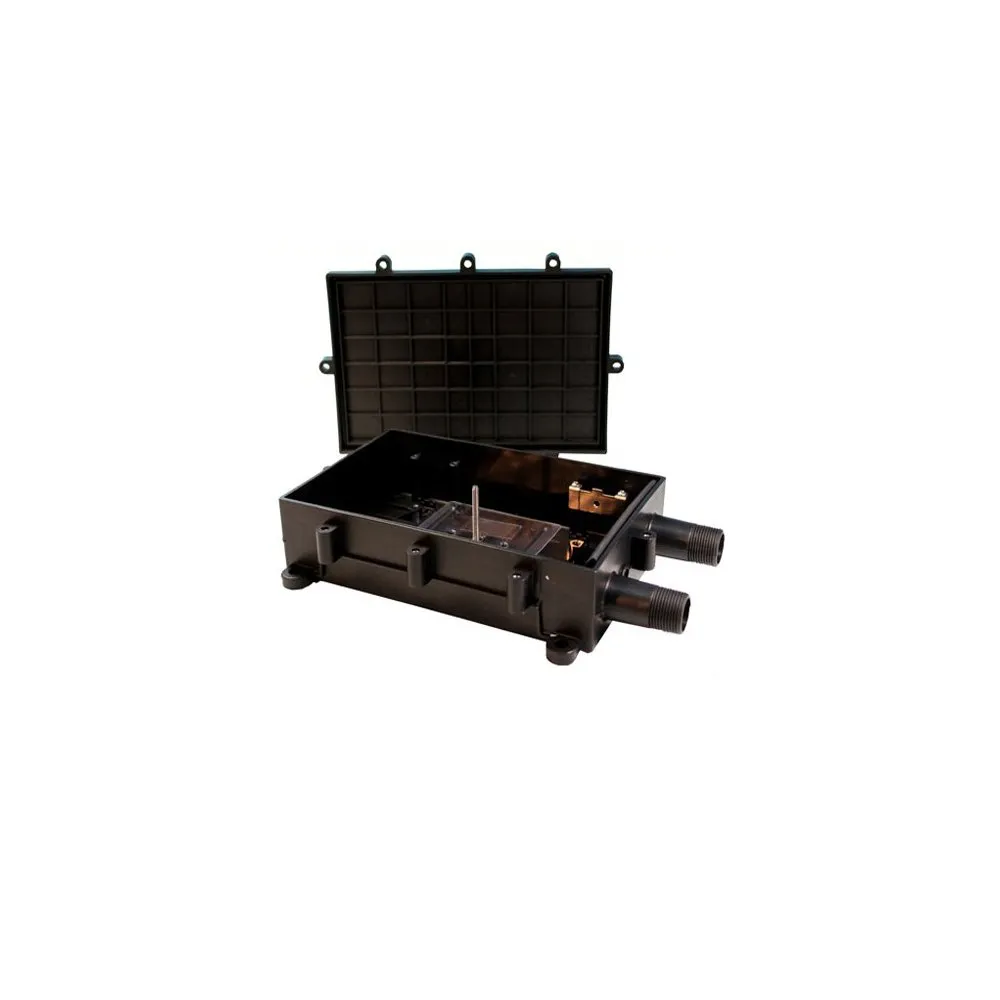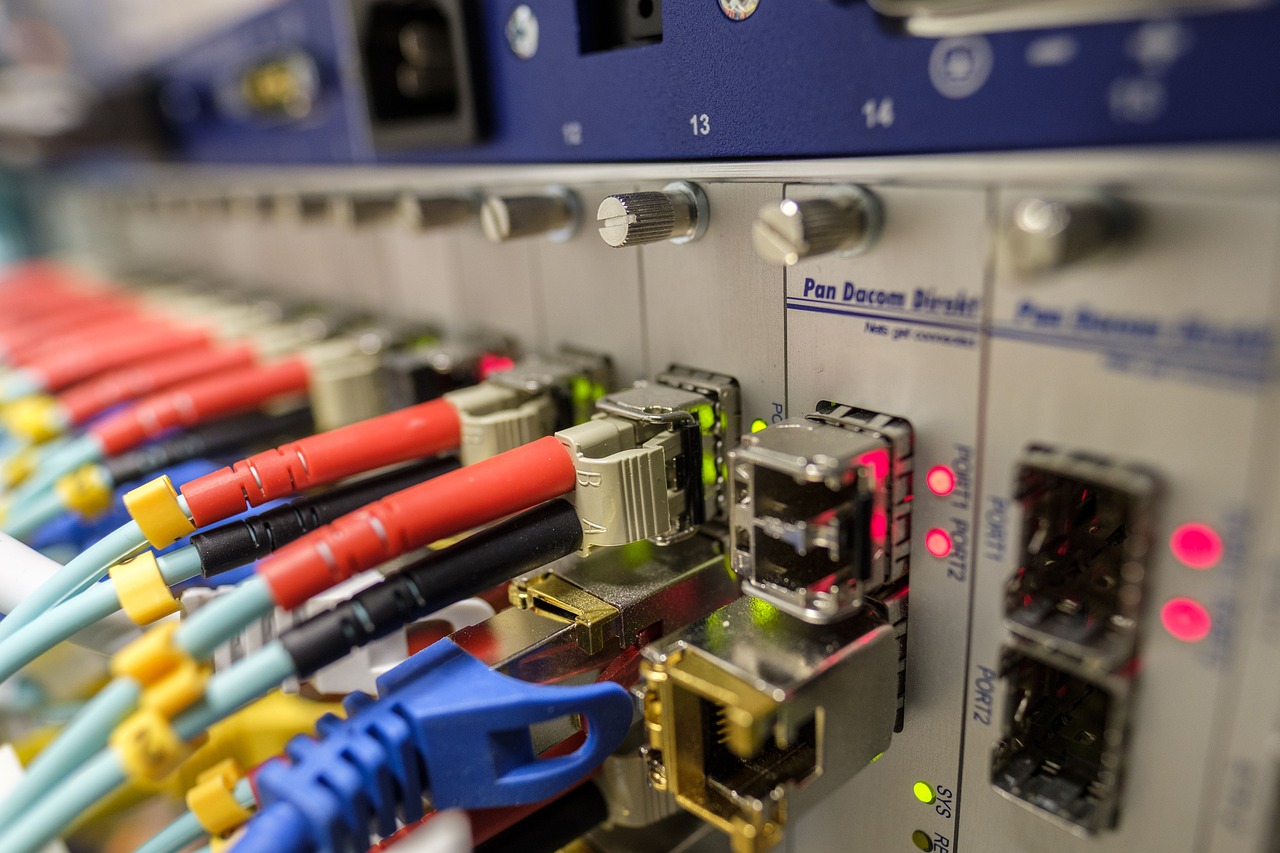Essential Guide to 1 In, 1 Out, Outdoor, 12-48 Core Fiber Optic Splicing Boxes

Understanding Fiber Optic Splicing Boxes
Fiber optic splicing boxes play a crucial role in the seamless transmission of data and information in modern communication networks. In this section, we will delve into the fundamental aspects of fiber optic technology and the specific functions and features of 1 In, 1 Out, outdoor splicing boxes.

What is a Fiber Optic Splicing Box?
The Basics of Fiber Optic Technology
Fiber optics involves the transmission of data through optical fibers, which are thin, flexible strands of glass or plastic that can carry light over long distances. This technology enables high-speed data transfer and is widely used in telecommunications, internet connections, and network infrastructure.
The Role of a Splicing Box in Fiber Optics
A fiber optic splicing box serves as a protective enclosure for spliced fiber optic cables. It provides a secure environment for connecting individual fibers while ensuring minimal signal loss. Additionally, it safeguards the delicate splices from environmental factors such as moisture, dust, and physical damage.
Key Features of 1 In, 1 Out, Outdoor Splicing Boxes
Capacity and Flexibility
The 1 In, 1 Out configuration refers to the number of input and output ports available in the splicing box. This setup offers simplicity and efficiency for single-cable connections. Moreover, outdoor splicing boxes are designed to accommodate various cable types and sizes, providing flexibility for different network configurations.
Durability for Outdoor Use
Outdoor splicing boxes are engineered to withstand harsh environmental conditions. They are constructed with robust materials that offer resistance to UV radiation, extreme temperatures, and moisture ingress. These features ensure reliable performance even in challenging outdoor settings.
The Importance of Outdoor Splicing Boxes
In the realm of fiber optic networks, outdoor splicing boxes play a pivotal role in ensuring the reliability and longevity of connections, particularly in challenging environmental conditions. Let's explore the significance of these robust enclosures in safeguarding connections and optimizing network performance.
Protecting Connections in Harsh Environments
Weather Resistance
The outdoor environment presents a myriad of weather-related challenges, from scorching heat to freezing cold, as well as exposure to rain and snow. Outdoor splicing boxes are specifically engineered to withstand these harsh conditions, providing a protective barrier against moisture ingress and temperature fluctuations. This resilience ensures that the delicate fiber optic connections remain uncompromised, even amidst extreme weather variations.
Physical Security
Beyond weather considerations, outdoor installations are also susceptible to physical tampering and unauthorized access. Therefore, outdoor splicing boxes are designed with robust locking mechanisms and durable materials to deter vandalism and unauthorized entry. By fortifying the physical security of fiber optic connections, these splicing boxes contribute to the overall integrity and reliability of the network infrastructure.
Enhancing Network Performance
Maintaining Signal Integrity
The seamless transmission of data across fiber optic networks relies heavily on signal integrity. Outdoor splicing boxes play a crucial role in preserving this integrity by shielding the spliced fibers from external interference and environmental factors. By mitigating signal degradation due to environmental elements, such as moisture or temperature fluctuations, these enclosures uphold the consistent delivery of data signals across the network.
Reducing Maintenance Needs
Incorporating outdoor splicing boxes into network infrastructure not only safeguards connections but also minimizes maintenance requirements. By providing a secure and stable environment for fiber optic connections, these enclosures reduce the need for frequent inspections and repairs. This proactive approach to maintenance translates into cost savings and operational efficiency for network operators while ensuring uninterrupted connectivity for end-users.
A Simple Guide to Horizontal Connection
Now, let's delve into the process of horizontal connection in fiber optics and explore the benefits it offers for outdoor splicing applications.
Understanding Horizontal Connection in Fiber Optics
The Basics of Horizontal Connection
Horizontal connection in fiber optics refers to the method of joining two fiber optic cables that are oriented parallel to the ground. This type of connection is particularly relevant in outdoor settings where cables need to be routed horizontally over long distances. Fiber optic cables are carefully aligned and fused together to ensure seamless data transmission across extended outdoor network infrastructures.
Benefits of Horizontal Connection for Outdoor Splicing
Horizontal connection provides several advantages for outdoor splicing scenarios. Firstly, it allows for efficient and organized cable routing, enabling network operators to establish reliable connections across expansive outdoor environments. Additionally, this method minimizes signal loss and ensures consistent data transmission, contributing to the overall performance and reliability of outdoor fiber optic networks.
Step-by-Step Guide to Making a Horizontal Connection
Preparing Your Fiber Optic Cables
Before initiating the horizontal connection process, it is essential to prepare the fiber optic cables meticulously. Begin by inspecting the cable ends to ensure they are clean and free from any contaminants that could impede the splicing process. Use specialized cleaning tools and solutions to remove any dust or debris from the cable ends, thereby optimizing the quality of the splice.
Next, carefully align the fibers within each cable, ensuring that they are precisely positioned for fusion. This alignment is critical for achieving low-loss splices and maintaining signal integrity across the connected fibers.
Completing the Splicing Process
Once the cables are prepared, proceed with fusing them together using a precision fiber optic fusion splicer. This advanced equipment facilitates a secure and permanent bond between the fibers, creating a robust horizontal connection. During this process, it is vital to adhere to precise fusion parameters and quality control measures to guarantee optimal splice performance.
After completing the fusion process, protect the spliced area by applying protective sleeves or enclosures designed specifically for outdoor use. These protective elements shield the splice from environmental factors such as moisture and physical stress, ensuring its longevity and reliability in challenging outdoor conditions.
Choosing the Right Splicing Box for Your Needs
When selecting a splicing box for your specific requirements, it's essential to consider several factors that can significantly impact the performance and longevity of your fiber optic connections.
Factors to Consider
Number of Cores
The number of cores in a splicing box directly correlates with its capacity to accommodate multiple fiber optic cables. Whether you require a smaller capacity for basic connections or a larger one for complex network configurations, ensuring that the splicing box aligns with your core needs is crucial for seamless data transmission.
Environmental Conditions
Environmental conditions play a pivotal role in determining the suitability of a splicing box for outdoor use. Factors such as UV radiation exposure, temperature variations, and moisture levels can impact the durability and reliability of the enclosure. Therefore, opt for splicing boxes specifically designed to withstand harsh environmental elements, ensuring uninterrupted connectivity in outdoor settings.
My Experience with Different Splicing Boxes
Throughout my journey working with fiber optic networks, I've encountered various splicing boxes, each presenting unique advantages and considerations.
Successes and Failures
In some instances, I've witnessed remarkable success with certain splicing boxes that exhibited exceptional weather resistance and robust construction. These enclosures effectively safeguarded fiber optic connections in challenging outdoor environments, contributing to reliable network performance.
However, there have also been instances where subpar splicing boxes failed to endure extreme weather conditions, leading to connectivity issues and maintenance challenges. It's evident that investing in high-quality splicing boxes tailored to specific environmental demands is paramount for long-term network stability.
Recommendations for Various Applications
Based on my experiences, I recommend prioritizing outdoor splicing boxes engineered with durable materials and advanced protective features. Additionally, consider consulting industry experts or reputable suppliers to identify the most suitable splicing box for your unique application requirements.
See Also
A Comprehensive Manual for ABSModule Splice Applications Using 1x32 PLC Fiber Splitter
Crucial Care Guidelines for Outdoor FTTX Precon Fiber Optic Distribution Termination Box
Comparison: FTTH Fiber Termination Boxes vs. Traditional Outdoor Cable Termination Methods


